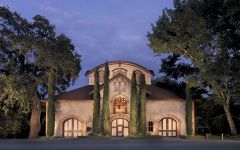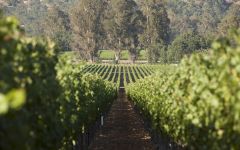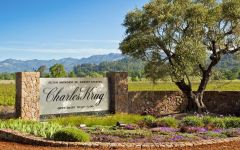Charles Krug Sauvignon Blanc 2019
-
Tasting
Panel -
Wine
Enthusiast -
James
Suckling



Product Details
Your Rating
Somm Note
Winemaker Notes
Professional Ratings
-
Tasting Panel
The fruit for this wine— one of the most iconic Sauvignon Blancs in California—is mostly sourced from Krug’s St. Helena estate. Cold-fermented in stainless steel, it exudes zesty, vibrant, and clean aromas of lime and lime blossom. A subtle creaminess laced with notes of key lime pie, mango, and a hint of jasmine leaves a touch of sweetness on the finish. The bright acidity lends sharp focus.
-
Wine Enthusiast
This is a stainless-steel fermented white made in large quantities that hits the mark in its candied perfume of peach and apricot. Lively and crisp, it retains a wealth of high-toned acidity and brightness throughout.
-
James Suckling
A bright, tangy sauvignon blanc with sliced lemons and green apples. Medium body, vivid acidity and a steely finish. Drink now.
Other Vintages
2022-
Wine
Enthusiast
-
Tasting
Panel -
James
Suckling -
Wilfred
Wong
-
Wine
Spectator
-
Wilfred
Wong
-
Wine
Enthusiast -
James
Suckling
-
Wine
Enthusiast
-
Wine &
Spirits






In 1861, Charles Krug, the visionary father of Napa Valley winemaking, established the winery that started it all. In 1943, Cesare and Rosa Mondavi purchased this iconic estate and continued to build on its reputation for innovation and uncompromising quality. Their son, Peter Mondavi Sr., carried on this tradition remaining active in the winery until his passing in 2016 at the age of 101.
Today his two sons–Peter Jr. and Marc–steward the family business as co-proprietors intent on building a lasting legacy for their children and those generations still to come. 2018 marked the 75th Anniversary of four generations of Mondavi Family ownership of Charles Krug.

Capable of a vast array of styles, Sauvignon Blanc is a crisp, refreshing variety that equally reflects both terroir and varietal character. Though it can vary depending on where it is grown, a couple of commonalities always exist—namely, zesty acidity and intense aromatics. This variety is of French provenance. Somm Secret—Along with Cabernet Franc, Sauvignon Blanc is a proud parent of Cabernet Sauvignon. That green bell pepper aroma that all three varieties share is no coincidence—it comes from a high concentration of pyrazines (herbaceous aromatic compounds) inherent to each member of the family.

St. Helena is in the heart of the Napa Valley, nestled between Calistoga to the north and Rutherford on its southern border. On its western side, the Mayacamas Mountains guard it from the cooling effects of the Pacific Ocean; to its east stand the Vaca Mountains. In conjunction, these mountain ranges serve to lock in summer daytime heat. But in the evening, cool air from the San Pablo Bay funnels up through the valley, creating very chilly nights. It isn’t uncommon for temperatures to drop 50 degrees, a shift that promotes a balance of sugar ripeness and acidity in wine grapes.
St. Helena contains a plethora of different soil types in a small area, which have been enhanced over centuries by rain runoff from both mountain ranges. Its vineyards cover a variety of terrain, spreading across the bucolic valley floor and its benchlands.
These ideal topographic and climatic growing conditions easily caught the attention of early winemaking pioneers. In fact, St. Helena is the birthplace of Napa Valley’s commercial wine industry. Dr. Crane founded his cellar in 1859, David Fulton in 1860 and Charles Krug in 1861.
Today there are no less than 400 separate vineyards planted within the 12,000 acres that make up the St. Helena appellation.
Revered most for its red wines based on Bordeaux varieties, namely Cabernet Sauvignon, the St. Helena appellation is also a source of superior Syrah, Zinfandel and Sauvignon blanc.
